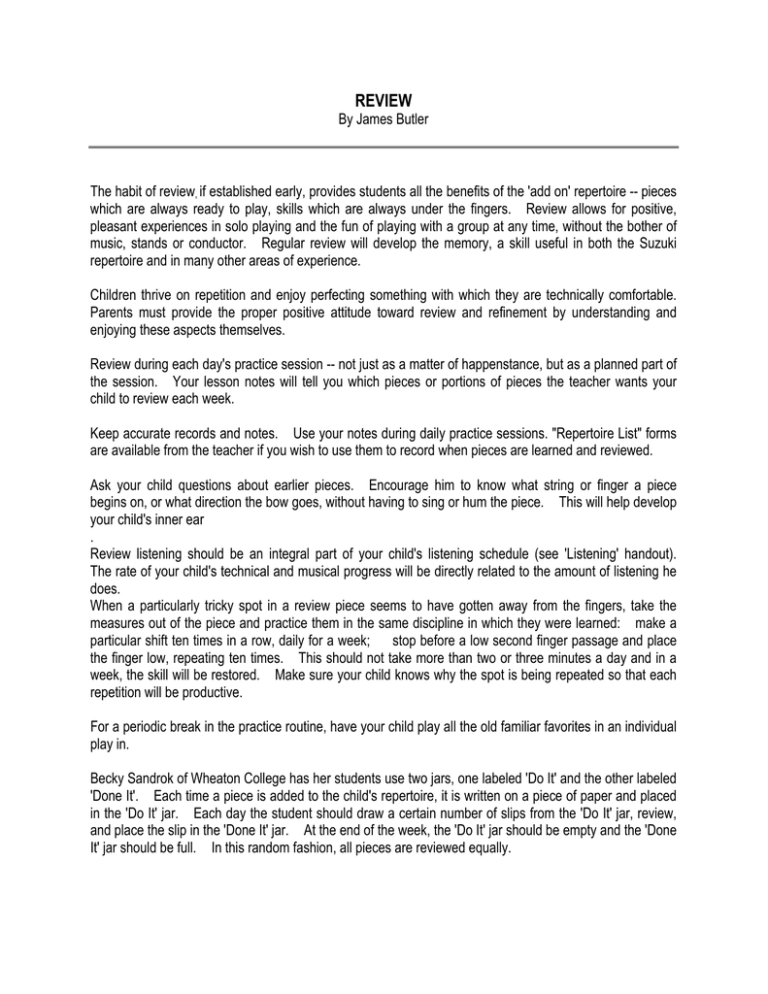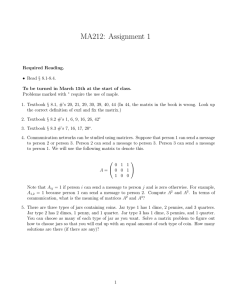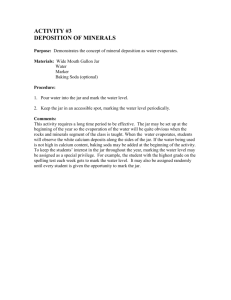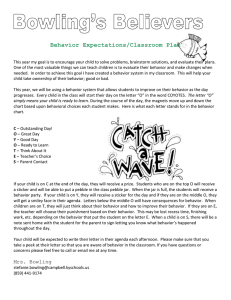REVIEW
advertisement

REVIEW By James Butler The habit of review, if established early, provides students all the benefits of the 'add on' repertoire -- pieces which are always ready to play, skills which are always under the fingers. Review allows for positive, pleasant experiences in solo playing and the fun of playing with a group at any time, without the bother of music, stands or conductor. Regular review will develop the memory, a skill useful in both the Suzuki repertoire and in many other areas of experience. Children thrive on repetition and enjoy perfecting something with which they are technically comfortable. Parents must provide the proper positive attitude toward review and refinement by understanding and enjoying these aspects themselves. Review during each day's practice session -- not just as a matter of happenstance, but as a planned part of the session. Your lesson notes will tell you which pieces or portions of pieces the teacher wants your child to review each week. Keep accurate records and notes. Use your notes during daily practice sessions. "Repertoire List" forms are available from the teacher if you wish to use them to record when pieces are learned and reviewed. Ask your child questions about earlier pieces. Encourage him to know what string or finger a piece begins on, or what direction the bow goes, without having to sing or hum the piece. This will help develop your child's inner ear . Review listening should be an integral part of your child's listening schedule (see 'Listening' handout). The rate of your child's technical and musical progress will be directly related to the amount of listening he does. When a particularly tricky spot in a review piece seems to have gotten away from the fingers, take the measures out of the piece and practice them in the same discipline in which they were learned: make a particular shift ten times in a row, daily for a week; stop before a low second finger passage and place the finger low, repeating ten times. This should not take more than two or three minutes a day and in a week, the skill will be restored. Make sure your child knows why the spot is being repeated so that each repetition will be productive. For a periodic break in the practice routine, have your child play all the old familiar favorites in an individual play in. Becky Sandrok of Wheaton College has her students use two jars, one labeled 'Do It' and the other labeled 'Done It'. Each time a piece is added to the child's repertoire, it is written on a piece of paper and placed in the 'Do It' jar. Each day the student should draw a certain number of slips from the 'Do It' jar, review, and place the slip in the 'Done It' jar. At the end of the week, the 'Do It' jar should be empty and the 'Done It' jar should be full. In this random fashion, all pieces are reviewed equally.






